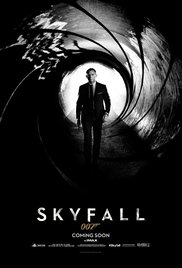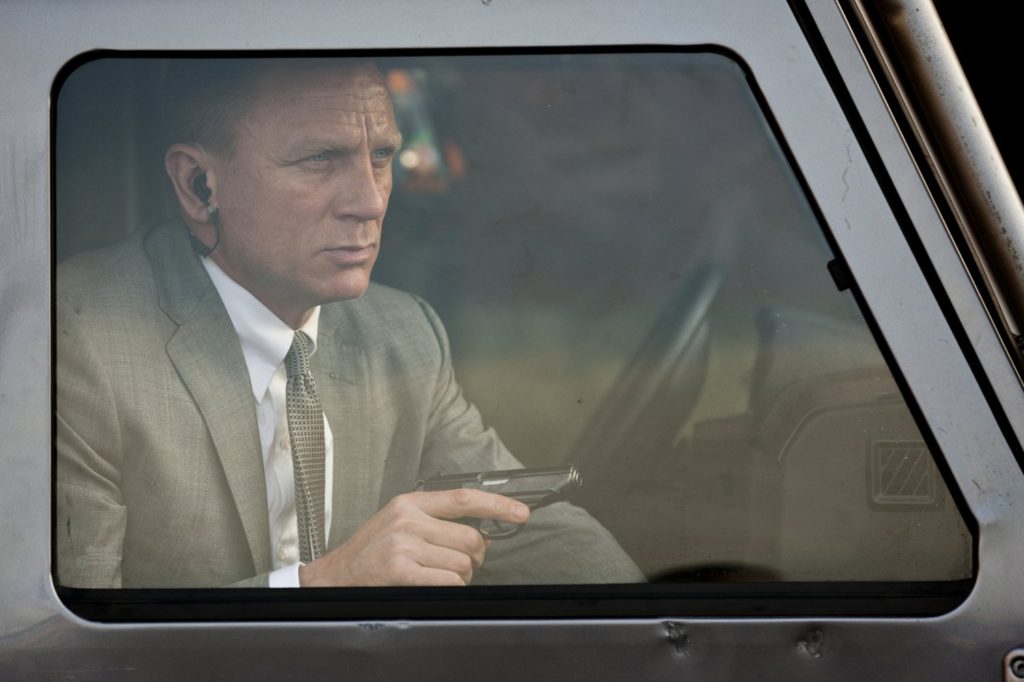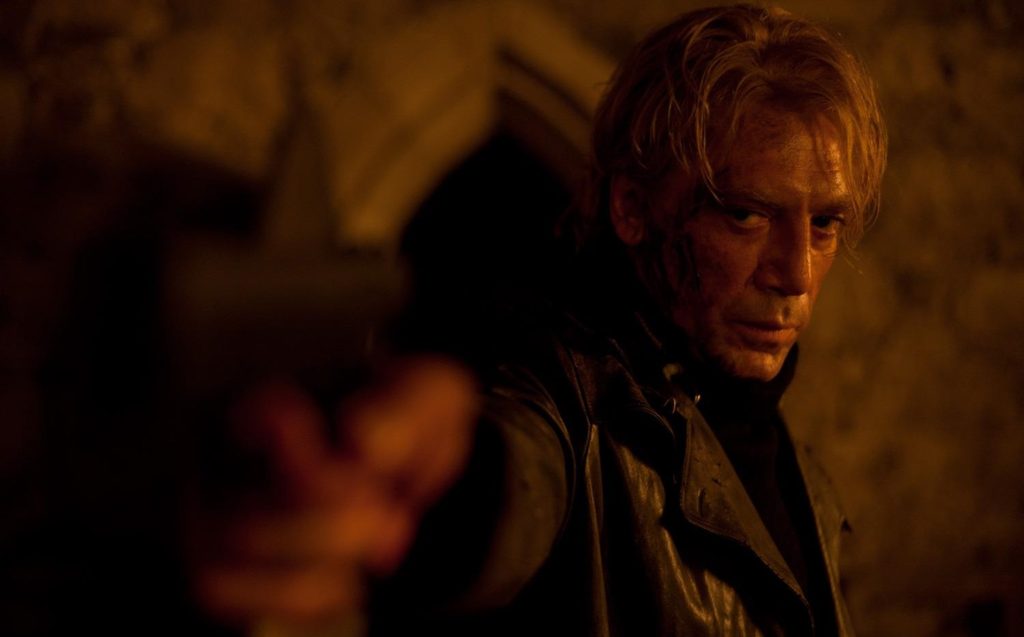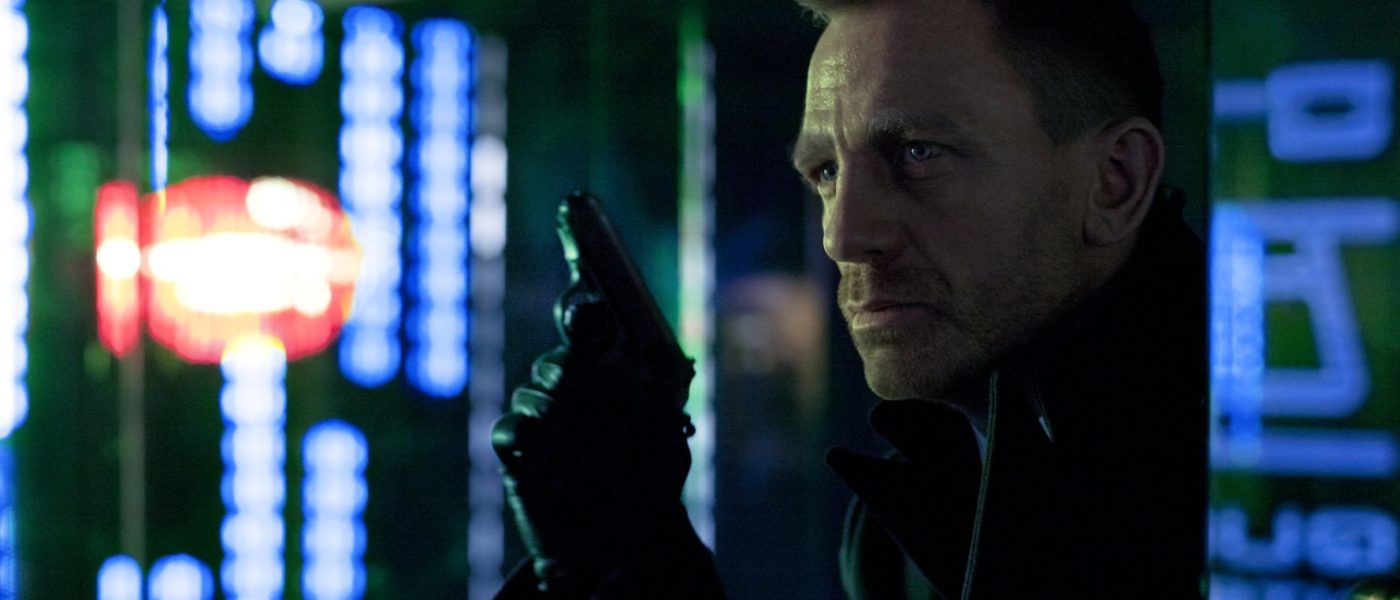Bond Returns at an All-Time High
DIRECTED BY SAM MENDES/2012
 Daniel Craig is back, however very little else is familiar about the newest installment in the James Bond series, Skyfall. A new director (the usually hit or miss Sam Mendes); a new cinematographer (the amazing Roger Deakins, who makes it look more like one of his movies than a Bond movie); a new villain, the enigmatic Javier Bardem, playing the best Bond villain since Jaws; and a refreshingly stripped-down plot.
Daniel Craig is back, however very little else is familiar about the newest installment in the James Bond series, Skyfall. A new director (the usually hit or miss Sam Mendes); a new cinematographer (the amazing Roger Deakins, who makes it look more like one of his movies than a Bond movie); a new villain, the enigmatic Javier Bardem, playing the best Bond villain since Jaws; and a refreshingly stripped-down plot.
Bardem plays Silva, an ex agent now turned villain who used to work directly under M (played once again by Judi Dench), and who went rogue fifteen years prior. He was sold out by M in exchange for five English prisoners which led to Silva being imprisoned and tortured for five years before being released, and now has only revenge and the death of M on his mind. Bond’s job is simple; he doesn’t have to save the world from a nuclear bomb or some kind of world domination this time; he just needs to protect M from someone who has the same training as he does.
The parallels between Bond and Silva are what make the movie. The explosive opening scene is of Bond chasing a man (who we later learn is working for Silva). While chasing him he comes across another fellow agent who has been shot but is still alive. Bond wants to save him, but M orders him to leave the agent to die and pursue the target. Bond begrudgingly obliges. He finally catches up with the target while on top of a moving train. Another agent is set up with a sniper rifle trying to get a shot. The agent doesn’t have a clean one. A good risk she may hit Bond, who is now fully engaged in a fist fight with the target. M orders the shot. Bond is hit and falls several hundred feet off of the train and into a river, left for dead. After Bond’s recovery from what would be death for anyone else, he continues the mission like nothing happened, protect M, the person who ordered the bullet that hit him.

This setup creates some very deep moral questions. Who is the real villain? M is the most heartless of the bunch, as she plays a God-like figure who ruthlessly orders the death of her own people for the greater good. When Silva comes back for revenge, Bond and the audience feel, if not sympathy, at least empathy for Silva. And then there’s the moral question of: what even makes a person bad? Most people who have done something bad will have an experience in their life that helps them justify these bad acts.
So Silva was abandoned by M and he becomes a villain. A shot was ordered by M knowing there was a high probability it’d hit Bond, it does hit him, and he remains a hero. Is Silva really a villain or is he just reacting the same way we all would? Is Bond really a hero or would we all have it in us to do the right thing, as he is? Is Silva the hero and Bond the villain, and we are just seeing it through Bond’s perspective? This movie is not just a great Bond movie; it’s a great movie and begs a lot of questions about humanity.

Javier Bardem in SKYFALL
This movie is art. And it looks like art. Deakins, who shot both Revolutionary Road and Jarhead for Mendes, is at the top of his game. Gorgeous and creative photography including a fight between Bond and a villain that’s lit to show them as two unrecognizable silhouettes. However they are fighting over a gun that keeps going off creating a flash that for a second will alert the audience as to which one is Bond. It’s just incredible.
The movie does have some plot holes (for instance Bond recites back verbatim to M what she said to order the shot that hit him; the only way he knows that was if he heard it through his radio; and if that was the case, why didn’t he duck to give the agent the shot?) But it’s a Bond movie, would you not expect that? This is Bond at his best. No convoluted plots; no narrative red herrings; no fat. Just Bond becoming the Bond we all know. This is not only the best Bond movie ever, but it’s the best movie of the year.


